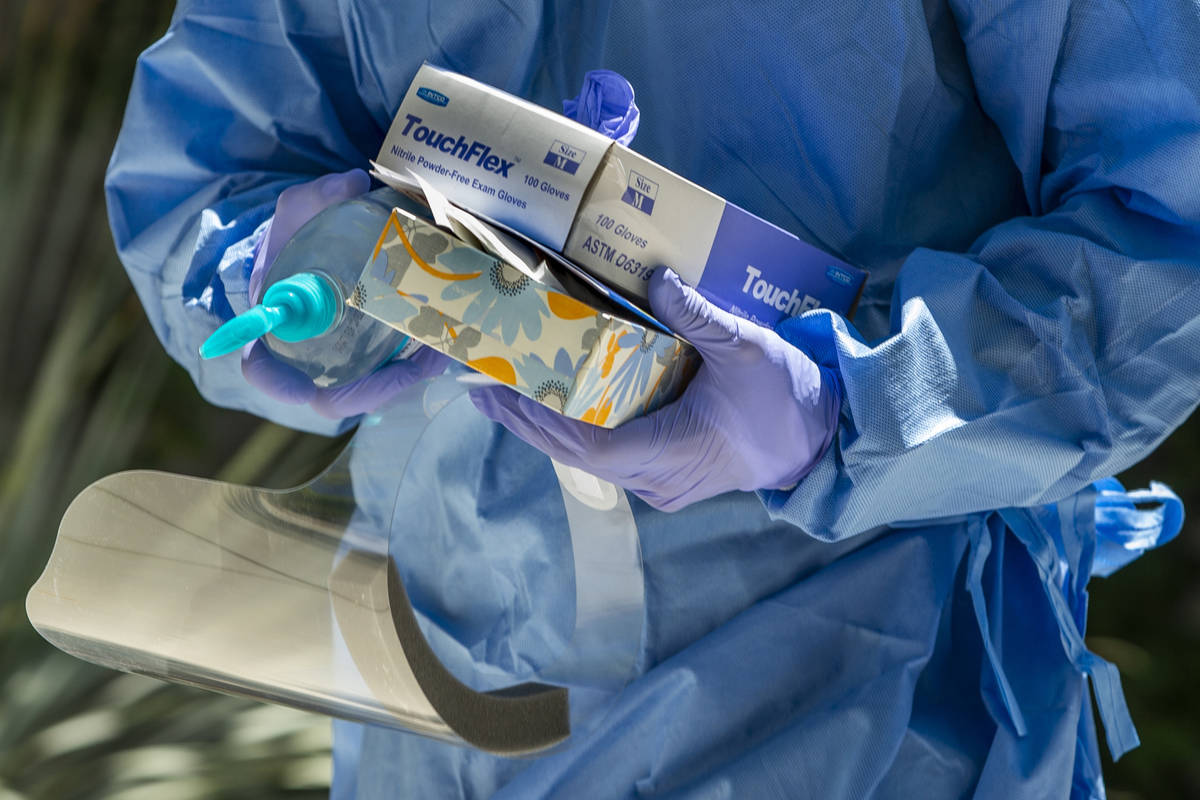Nevada reports 29 more COVID deaths, most in nearly 3 months
Nevada on Friday reported the highest single-day increase in coronavirus deaths in nearly three months, according to the Department of Health and Human Services.
There were 1,839 additional coronavirus cases reported on Friday, along with 29 new deaths, according to the state health department’s coronavirus website. Friday was the highest number of new deaths reported throughout the state since Aug. 25, when 30 additional fatalities were reported.
The updated figures brought totals in the state to 129,714 cases and 1,982 deaths, state data shows.
The state has seen a recent drastic increase in case totals, with Gov. Steve Sisolak last week imploring Nevadans to stay home for 14 days to curb the outbreak. But case numbers have not significantly gone down since the announcement, and a record high increase in new cases was recorded on Thursday, at 2,269 cases.
Both the new case reports and the positivity rate began increasing in mid-September. When compared with last month, November has seen an increase in weekly totals of deaths reported, a disease measure that tends to lag a month or more behind case increases.
This week has already surpassed the number of weekly deaths reported in each of the first two weeks of November, according to data maintained by the Review-Journal, which measures weekly deaths from Sunday to Saturday. As of Friday, 74 deaths have been recorded this week, while there were 58 deaths reported last week and 73 the week prior.
Data guide: COVID-19’s impact on Nevada
Cumulative death totals can vary from state and county health departments because both agencies redistribute cases after daily reports to account for late laboratory reports. Some cases can be removed from county totals after further investigation.
Caleb Cage, the director of the state’s COVID-19 response task force, said during a call with reporters Friday that Northern Nevada has experienced its first significant decline in coronavirus hospitalizations in weeks. The number of people hospitalized with suspected or confirmed coronavirus cases has also remained flat over the past 24 hours.
These are “encouraging signs that the public is taking Stay Home 2.0 seriously,” said Cage, referencing Sisolak’s plea for Nevadans to stay home.
It is too early, however, to know whether these signs will turn into a trend, he said.
Asked about increasing limits on sizes of conventions, he said the matter would be addressed in the governor’s forthcoming plan. However, “anything that is going to involve large amounts of people is going to be challenging in the current situation,” Cage said
The state’s cumulative positivity rate, calculated by the Review-Journal as the number of cases divided by the number of people tested since the start of the pandemic, reached 14.31 percent on Friday, a 0.15 percentage point increase from the previous day.
The state health department calculates a positivity rate over a two-week period, and the rate increased by 0.2 percentage points on Friday to reach 15.8 percent. The rate is calculated using “testing encounters,” which is a larger number than total people tested, as many have been tested multiple times throughout the pandemic.
A day after Clark County surpassed more than 100,000 cumulative coronavirus cases since the start of the pandemic, the Southern Nevada Health District on Friday recorded 1,381 additional cases and 23 new fatalities.
The updated figures posted to the county health district’s coronavirus website brought totals to 101,933 cases and 1,670 deaths.
Contact Katelyn Newberg at knewberg@reviewjournal.com or 702-383-0240. Follow @k_newberg on Twitter. Review-Journal staff writer Mary Hynes contributed to this report.


















